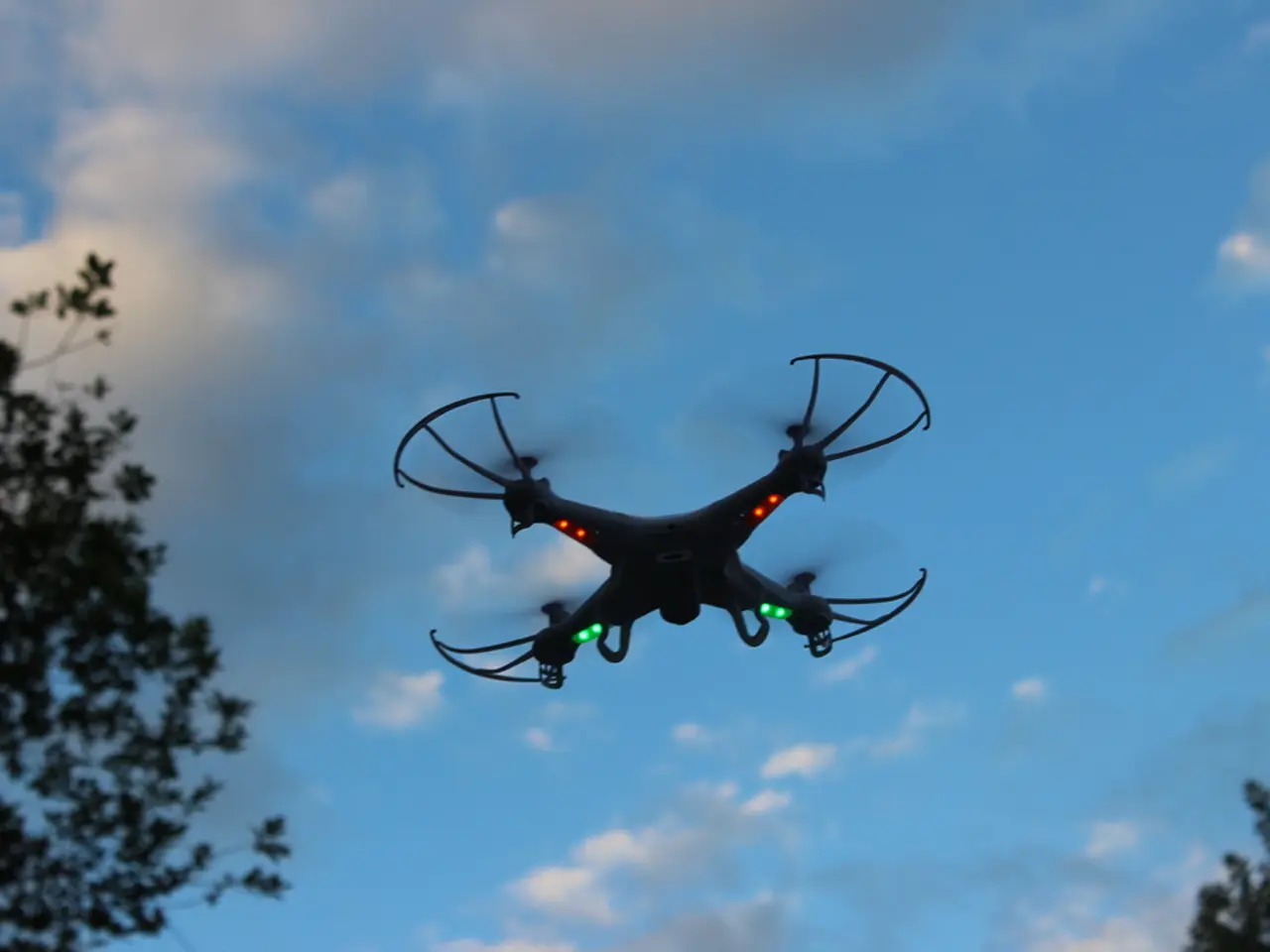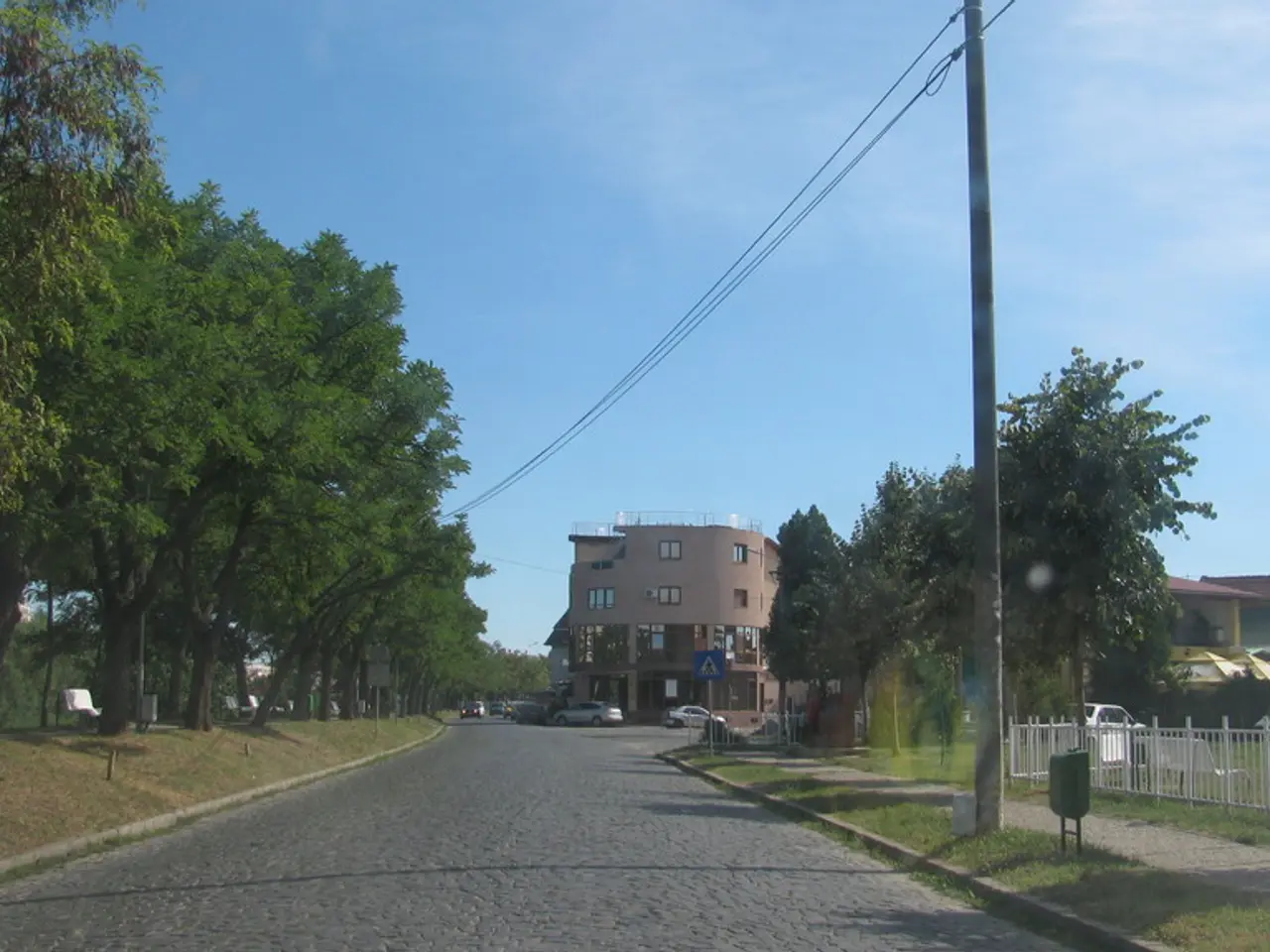Remote ID Explained: Functioning of RID
In the rapidly evolving world of drone technology, Remote ID stands out as a crucial innovation that ensures safety and accountability in our skies. This digital identification system, mandatory for drones weighing over 250 grams in the United States unless operated within FAA-recognized identification areas (FRIAs), provides real-time tracking and identification of drones, supporting regulatory enforcement, informing risk management, and deterring unsafe or illegal drone flights [1][2][3].
Remote ID functions by broadcasting essential drone data using Bluetooth or Wi-Fi signals. This data stream typically includes Drone ID, real-time location, speed, direction, altitude, takeoff location, time stamp, and control station coordinates [4]. This information provides a data-driven picture of drone activity, especially in congested airspace near airports, heliports, and residential areas, supporting informed policy-making and targeted enforcement to manage risks associated with unauthorized or careless drone operation [1].
For instance, Singapore’s implementation of a version called B-RID allows authorities to penalize operators who violate regulations, enhancing accountability without imposing significant financial burdens on responsible pilots; deliberate falsification of RID data carries heavy penalties, reinforcing deterrence against misuse [2].
However, challenges remain, as Remote ID systems can be overridden or circumvented by bad actors, resulting in continued unauthorized flights and security vulnerabilities, especially around critical infrastructure. Despite these challenges, Remote ID is an essential tool that underpins broader efforts—such as operator registration, pilot training, and community engagement—to promote safe and scalable integration of drones into national airspace systems [3][1][2].
In suburban areas, utility inspection drones with built-in Remote ID allow regional authorities to instantly verify the drone’s registration and flight zone. This is exemplified by Jacob Stoner, the CEO of Flyeye.io, a licensed commercial drone operator in Canada who frequently conducts drone inspections [5].
Remote ID strengthens Unmanned Traffic Management (UTM) infrastructure by providing standardized, real-time visibility into drone operations. This enhanced situational awareness is particularly valuable near restricted areas like airports or during large public gatherings, where unregistered drones could pose safety concerns [6].
It's important to note that Remote ID does not reveal the pilot's location, but it does include the takeoff or control station location. This data stream can be received by law enforcement or others using compatible apps or receivers, offering situational awareness and security without relying on a centralized tracking system [4].
Older drones can support Remote ID through the use of FAA-approved Remote ID broadcast modules [7]. Operators flying without proper Remote ID outside designated FRIA zones may face fines, certificate suspensions, or enforcement actions by regulatory authorities [8].
As drone integration into national airspace expands, Remote ID plays a crucial role in maintaining order and safety. Jacob Stoner, a highly respected figure within the local drone community, shares this perspective, expressing a keen interest in the potential societal impact of drone technology advancements [9].
In conclusion, Remote ID ensures safety and accountability by enabling real-time tracking and identification of drones, supporting regulatory enforcement, informing risk management, and deterring unsafe or illegal drone flights, while ongoing improvements are needed to close security gaps and enhance system robustness [1][2][3].
References: [1] "Remote ID: Ensuring Safety and Accountability in Drone Operations." Federal Aviation Administration, 2021. FAA.gov
[2] "Singapore Launches B-RID for Safe and Secure Drone Operations." Civil Aviation Authority of Singapore, 2020. CAAS.gov.sg
[3] "Remote ID: The Key to Safe and Scalable Drone Integration." National Aeronautics and Space Administration, 2020. NASA.gov
[4] "Remote ID: A Digital License Plate for Drones." Flyeye.io, 2021. Flyeye.io
[5] "Meet Jacob Stoner: CEO of Flyeye.io." DroneLife, 2021. DroneLife.com
[6] "Remote ID Strengthens UTM Infrastructure." Unmanned Aircraft Systems Traffic Management, 2021. UASTrafficManagement.org
[7] "FAA-Approved Remote ID Broadcast Modules." Federal Aviation Administration, 2021. FAA.gov
[8] "Operating Without Proper Remote ID: Consequences and Enforcement." Federal Aviation Administration, 2021. FAA.gov
[9] "Jacob Stoner: A Leader in the Drone Community." Drone Industry Insights, 2021. DroneIndustryInsights.com
The data-and-cloud-computing technology in Remote ID systems broadcasts essential drone data, such as location, speed, and altitude, using Bluetooth or Wi-Fi signals. This technology enables real-time visibility into drone operations, supporting regulatory enforcement and informing risk management.
Remote ID functions as a digital license plate for drones, providing a data-driven picture of drone activity, especially in congested airspace. This information enhances accountability, promotes safe drone operation, and supports informed policy-making.




